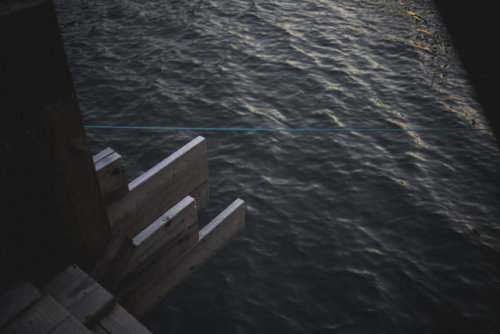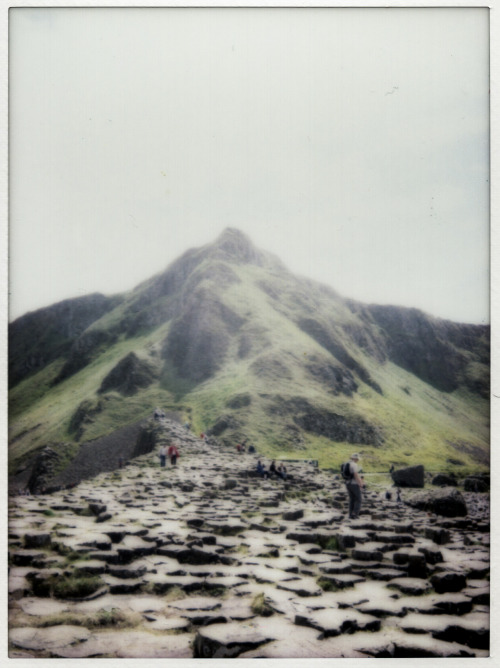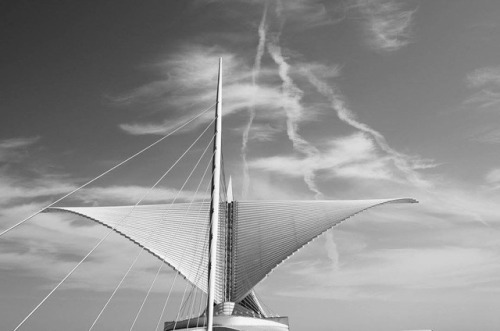#bucketlist

Lisbon / Portugal (by Daniel James Clark).

Catedral de Barcelona / Spain (by Albert Castane).
¡VIVA LA COCO! Congrats to the whole crew for the epic win. You guys are incredible and thanks for letting me be a part of such a beautiful film
#oscars #academyawards #bestanimatedfeature #pixarcoco #coco #illustration #bucketlist
Post link
Heaven on Earth? “Like” if you agree. Comment if you have a better location.
#heavenonearth #travelphotography #travelgram #drones #mavicpro #mavicpro2 #arduino #raspberrypi #maker #karaandnate #outdoorcheflife #besteverfoodreviewshow #bucketlist #swissalps #mounttitlis #swiss #switzerland #lauterbrunnen #lauterbrunnenvalley #waterfallsofinstagram #natgeo #natgeotravel (at Lauterbrunnen Valley Waterfalls)
https://www.instagram.com/p/CCU0H4KD344/?igshid=1m6td0vpl2dz1
Congratulations to the winner of our photographer’s choice #photojojoweeklyphoto challenge, Digitaldaguerrotype! This detailed, black and white snap of the Milwaukee Art Museum inspires our team to plan a photo road trip asap. What city is on your photography bucket list? http://bit.ly/PhotoaWeekChallenge35
Post link

Our van wheels crunched over unpaved road after unpaved road, kicking up mud and gravel as we bumbled along a series of winding dirt tracks which wove their way through endless pine forest.
This was the face of Bosnia & Herzegovina’s interior, a world away from the bustle and bullet-strewn concrete structures of its capital Sarajevo. Here, pretty little stone houses were strewn across scenic plateaus which seemed to appear mysteriously out of the dense thicket of trees that surrounded them and crept up to their doorsteps. Wild animals were known to roam these forests, and we wondered how humans could live so close to them without conflict.
We were still carving our route home out, ever Northbound, savouring these last few days in the Balkans before we would hotfoot across Europe back to England. We slept soundly that night, cradled by the forest, and coaxed our van into life with jackets bundled against the icy morning air. This was our pattern of travel these days; squeezing the most of every moment, battling with our van to get it home, the road our only constant as we went.⠀
As the forest dwindled and eventually gave way to civilisation we followed a winding little road partially covered by snow up to a ledge, where we spent the night sleeping underneath the remnants of Tito’s fist. Now a crumbling concrete structure, this bizarre object known as a spomenik had once been a monument to the Partisan soldiers who fought in the Battle of the Wounded in the valley below, but was nicknamed for its uncanny resemblance to Yugoslavia’s former leader ad the iron fist with which he ruled. However, shortly after the Bosnian War, a group of vandals planted dynamite inside and blew it to pieces, although its skeleton still dominates the skyline for miles around.
We were beginning to understand more of Bosnia’s chequered past, evident in every bullet-strewn building and every crumbling ruin we passed. Twenty years was not enough time to heal, but even after the visible reminders had long since been repaired, the memories would not fade for generations yet to come.⠀
⠀
Join us in this episode we take a drive through Europe’s deepest canyon!
After 6 incredible weeks, we ready ourselves to leave Albania. We set off early after 48 hours of torrential rain, and contend with landslides and snow on the treacherous road to the Vermosh border crossing.
Here we cross into Montenegro through a very small and rarely used border station. Our journey across Montenegro takes an interesting turn as we end up driving through the depths of Europe’s deepest canyon.
From here we attempt to reach the famous Durmitor National Park. Will the snow and cold weather conditions be enough to stop us entering again like the last time we were here?
Join us on this incredibly scenic drive through Europe’s black mountains, on YouTube NOW!
If you enjoyed the video please don’t forget to Share, Like and Subscribe, or consider joining us on Patreon to help us keep on creating content
From Rust To Roadtrip on YouTube

Our arrival in Bosnia & Herzegovina came as a pleasant surprise.⠀
After following the craggy walls of the mighty Tara Canyon all the way through Montenegro it led us straight into the capital city of Sarajevo. We weren’t here to see the war ruins, nor had we come to try and find the best burek (although that was debatable). No, with just seven short days in this intriguing country that was once one of the most fundamental parts of the Yugoslav Republic, there was only time to explore one thing: the remains of Sarajevo’s Winter Olympics venues.
We pulled up after a long day of inter-country driving, arranging of SIM cards and fawning over foreign foods in a new supermarket, next to a long, snaking and heavily graffitied piece of concrete. We’d seen photos of the abandoned bobsleigh track online but never for one minute did we imagine we could drive into it, let alone camp. The place was perfectly secluded amongst the pine trees, at the top of a mountain which gave a spectacular view over the city. As night fell we rested underneath the Sarajevan sky now studded with stars.
Come morning we noticed a distinct chill in the air, and threw open the door to discover a blanket of snow all around us. We’d had no inkling snow was coming, and had been lamenting the day before how incredible it would’ve been to see the bobsleigh track as it was during the 1984 Winter Olympics.⠀
We bundled on our boots in pure excitement and piled out of the van to make tracks in the fresh, untrodden snow and explore the lengths of the snaking concrete track which wound its way in and out of the pine forest. At times we were completely hidden by trees, shrouded in fog, appearing at regular intervals in view of a road or a place where spectators would’ve gathered in years gone by before the war changed the face of Sarajevo forever.
Fingers suitably numbed, we headed back into the van to warm them with coffee.

I wash everything by hand in our van- underwear, tops, cardigans, you name it, using whatever river or lake water is available nearby. We take a trip to the laundrette once every two months for our bedding and that’s it. It saves money, but I also enjoy doing it in some weird, old-fashioned way.
Maybe because it reminds me of when I was younger. We were always moving between houses, hauling all of our stuff in this big old yellow Mercedes truck to and fro across two countries. I got used to washing my clothes by hand in the sink of whatever house we were in that month, always a different bedroom or kitchen to get used to.
Maybe that lack of permanence in my formative years is what drove me to eventually get a van. Those memories of brushing my teeth in a lay-by or sleeping in the footwell of our truck seemed like hard done-by times back then, but I look back on them now with a sort of fondness and nostalgia at my unusual childhood.
There are many hundreds of little reasons that made me want to travel; moments that seemed innocuous at the time now resonate with a deeper meaning and inspire me to push on further. Movement is in my soul; it makes my spirit restless to sit still.
Often challenges can be the most defining points of our lives, whether we realise it at the time or only once they have been overcome. Maybe one day we’ll look back at these times we’re living now, cast a fresh gaze upon old memories, and I wonder which of those will stand out, and which will fade away.
Join us as we embark on a journey to reach one of Albania’s most remote villages, nestled within the mysterious Accursed Mountains.
In this episode we explore the mountainous wilds of Northern Albania. Setting off at sunrise, we struggle with the hostile terrain over four hours of intense hiking, accompanied by our guide, before reaching the small village of Mregu. Cut off from the rest of the country, this village is home to only a handful of residents, lying around 3 hours from the nearest city with no road access.
Here we meet one of the village’s last remaining residents, who welcomes us into her home and shows us her way of life. We learn about the challenges of remote mountain living, how to live entirely self-sufficiently, and about the depopulation of this incredible area as Albania speeds into the 21st century.
We conclude this episode with a stay by the incredible Komani Lake, an intense lightning storm and some crazy driving through the city of Shkodër as we make plans for our final days in Albania.
Join us in this mini documentary as we discover a unique way of life hidden within the Albanian Alps, on YouTube NOW!
If you enjoyed the video please don’t forget to Share, Like and Subscribe, or consider joining us on Patreon to help us keep on creating content
Big thank you to @undyingheads for the music, make sure you check them out!
Photo essay available to view over on our lbjournals website

Deep canyon walls rose high either side of us as we followed alongside the raging blue river, weaving in and out of craggy rocks and diving through tunnels carved out of the very mountainside itself.
After six short weeks in Albania, which felt like it had lasted both like a lifetime and the blink of an eye, we were now driving North through the Tara Canyon, one of Montenegro’s most impressive natural wonders and the deepest canyon in Europe.
Our journey had begun that morning after an exceptionally rainy day in Albania, and as we waited for the diggers to clear the landslides that blocked the road we were questioning whether we had to leave at all or if we could stay here forever. Our second time in Albania had been just as incredible as the first, and we left with a deeper understanding of the country as well as a handful of new friends.
The border crossing into Montenegro was no more than a remote outpost, lacking in electricity or internet; they wrote down our details by hand, stamped our passports, shouted out the letters “L- D- V!” then a burly uniformed man lifted the barrier by hand and we drove beneath it onto Montenegrin soil.
The sides of Tara Canyon soared up to 1300m above us, higher than our windscreen view would allow, and we found ourselves stopping frequently to admire it with coffees in hand. This was day one of our meandering journey back to the UK, taking in as much of the Western Balkan countries as we could along the way, and our revisit to Montenegro did not disappoint.
Two years ago we’d visited but largely stuck to the coast, afraid of the heavy winter snow further inland; this time round we actively sought it, and were not disappointed as we turned a corner into the Durmitor National Park and found a vast whitewashed landscape spread out before us.
Sadly we couldn’t stick around to enjoy it; with burnt-out glowplugs we were barely coaxing our van into life every morning, and an overnight stint at -7°C would surely leave us stranded.
We drove onwards, following the canyon walls until we arrived at the border to Bosnia & Herzegovina…
P.S. This is actually four photos stitched together to create a vertical panorama- that should give you a sense of how big this canyon is.

, , , …
Our boots crunched over loose, rocky scree and a vertical incline that threatened to topple us over at any minute. The track we were following was unlike anything we’d hiked before; less a path and more a trail carved out by the resilient villagers who lived at the top of this mountain.
We had journeyed to the Northernmost corner of Albania until the road could take us no further; here we left the van and met our guide who would take us to meet the villagers living in some of Albania’s most remote regions, places only accessible on foot or by mule.
At this altitude in the Albanian Alps there was no vegetation, nothing to suggest this area would support life; the closest thing to trees were the makeshift poles supporting a thin electricity wire than ran from the bottom of the valley to the peak above us. We followed the path arduously, gasping for breath and legs screaming in protest while our guide, who’d been traversing these mountains since he learned to walk, sailed ahead of us.
Men twice our age passed us with ease, taking their mules to the top to fetch hay, and we doubted whether we’d ever make it to the end of this 2km near-vertical climb.
But then, mercifully, the ground began to level out, and a luscious green pasture spread out before us, covering the plateau. This was the last place on earth we’d expected to see people living, yet unbelievably a dozen or so houses were spread out across the vast fields where horses and sheep grazed.
It took another hour or so to reach a homestead which looked like it might be inhabited; many of the rest were crumbling ruins, long abandoned as their owners headed for the city. A middle-aged woman greeted us at the door, wearing a white head scarf and modest clothing; she was clearly surprised and excited to have visitors. She immediately invited us inside for coffee, and set about pouring glasses of rakia from a bottle shaped like a crucifix.
We were in awe of her home, which was furnished with beautiful polished wood items and an ornate wood burner in the center. We inquired how she had managed to get it up here, and she recalled hauling it up the same track we had taken, carrying it on sticks along with her husband on their shoulders. The same would’ve been true for every item of furniture in their house, making this otherwise ordinary house suddenly look quite impossible.
After drinks, Age (Aga) happily showed us around her property; she had vegetables and dried mountain herbs in her larder, dried cuts of meat in her barn. She kept sheep for their milk, churned this by hand to make butter, and knitted clothes and rugs from their wool. Her water came from a spring and her income came from raising cattle. Every part of her life was fascinating to us; our minds boggled at the length and difficulty of the journey we had taken, hours from the nearest city with amenities, right up to this woman’s house that would be ordinary if not for its exceptional location atop a mountain.
It was still incomprehensible, even though we’d completed the journey ourselves, and we imagined her and her husband making their monthly trip to Shkodër then hiking back up the vertical path with their supplies; it was a world away from simply visiting the supermarket. From this vantage point we could see dozens more houses scattered across the mountains in even more unlikely places, and we were curious whether anyone still lived in them and what their stories were.
We said goodbye to Age, who still had much work to do before the sunset, and began our painstaking journey down the other side of the mountain left in complete and total awe.
This is an excerpt from an ongoing documentary project about the residents of the Albanian Alps, one of the most inaccessible regions of Europe. The video of this adventure will be out on YouTube on Sunday, and the full photo essay will be available to view on @lbjournalssoon.

The distant sounds of the Call To Prayer rang out across the steely waters of Lake Skadar, crackling out through distorted speakers atop the minarets of several mosques, clashing and vying for dominance like the howling of street dogs. The sky was reflected in the glassy lake surface as it turned slowly from blue to purple to an electrifying red which set the clouds ablaze. And we were making our preparations to head deep into the mountains.
We’d been parked up amongst the waterlogged trees and lake reeds for several days, a furtive little spot accessible by driving through a shallow river that had swollen to twice its size following the rainfall on the day we arrived. But now the blissful sunset colours cast down onto the distant mountains of Montenegro and all was calm in the far North of Albania again.
Of all the lakes we’d camped by in recent months, Lake Skadar was easily the largest and most impressive.⠀
While we’d stuck religiously to our inland route around the Balkan Peninsula these lakes gave us some comfort and a gentle reminder of the ocean’s edge we’d left behind in search of provincial adventures. Although we’d grown up a stone’s throw from the sea and these country’s coastlines provided an easily navigable and scenic route, we’d been drawn to see more of Europe’s hinterlands, a world away from glitzy seaside resorts and tourist attractions. In the heartlands of Albania we’d discovered spectacular mountainscapes, empty lands, impassable roads and an authenticity, warmth and unrivalled hospitality from its people. The same was true of the Balkans’ whole interior, and in fact we’d only briefly touched the sea in Thessaloniki since our departure from Calais many months prior.
These lesser-visited areas are what we live for; places you won’t find in any guidebook, unblemished of tourist attractions. Just raw and honest countryside, nothing more.⠀
We finished packing up our backpacks just as the last of the light was fading, ready for our journey tomorrow into the most remote corner of this country. ⠀
⠀

When it rains in the mountains, it really rains. Not a fine mizzle or the odd shower like we get in England, but a biblical, all-engrossing rain that pelts down from the sky and sends rivers running down the mountainsides in great waterfalls that flood the roads and make planning any sort of activity quite impossible.
Such is the unpredictability of the Accursed Mountains, a corner of Albania whose curious histories and unique way of life woven amongst its limestone peaks will forever keep us coming back for more.
This fascinating mountain range was so named for its wildly inhospitable conditions, and is one of the rare mountain ranges in Europe that is yet to be fully explored. But mountaineers with their compasses and maps will never truly conquer these mountains, for the only way to truly navigate them is with a lifetime of muscle memory, ingrained into mountain men from the age they learn to walk. There are few roads, no signposted trails, and no forgiveness; if you get lost and the weather doesn’t get you then the wolves surely will.
But while the mountains may ward you off with their inhospitality the people will surely not, as they are perhaps some of the warmest and most welcoming in all the Balkans. With no fear of strangers and no reason to lock their doors some three hours away from the nearest town, they will happily invite you into their home for a coffee and a rakia before you continue on your journey.
The Albanian Alps possess a deep sense of mystery that fascinates us and seems almost tangible as we pull off the craggy SH25 alongside the Drin river, unwilling to drive any further in the torrential downpour. The thunderstorm would not pass until tomorrow evening when we would be rewarded with another spectacular Albanian sunset, but before that we would endure a night of lightning strikes powerful enough to knock out the area’s only phone mast, and thunder that shook us violently inside our van; if you’ve never heard thunder in the mountains before, imagine someone dropping about thirty dustbins off the side of a cliff at once. It booms.
It felt all at once overwhelmingly exciting and familiar to be back in the North of Albania once again, parked up so close to an area we’d become so affiliated with that had played home to one of our favourite travel stories. But now we were about to make more, as we were set to be heading off the road and into the furthest reaches of these mountains on foot, a place where vehicles could only dream to go and mules were the primary mode of transport.
Soon we were going back into the heart of the Accursed Mountains.








